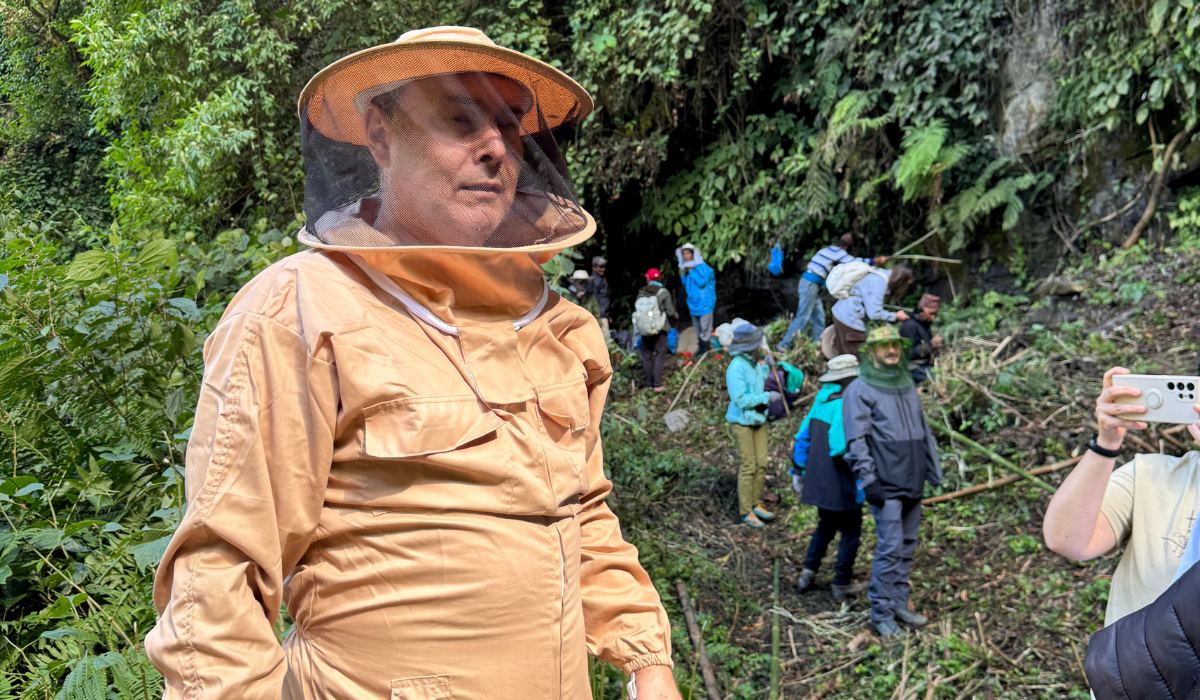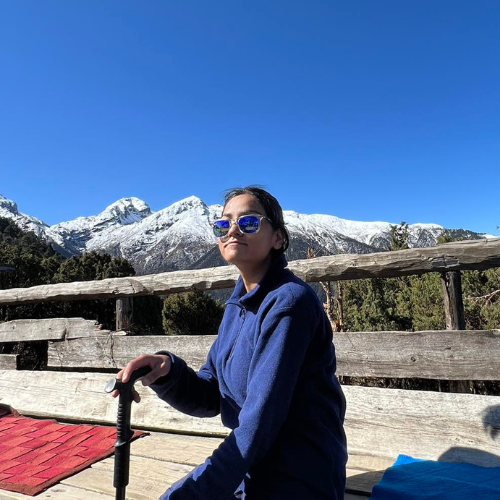Honey hunting tour in Nepal is a unique opportunity to witness an ancient tradition where the local communities dare to climb high cliffs to harvest honey from one of the world's largest honeybee colonies. It involves hiking into rugged, remote areas to witness this spectacle. Considering the various challenges and risks involved, it’s crucial that travellers are well-prepared for the physical demands, changing weather, and unique conditions of this activity. Our blog “Nepal Honey Hunting Packing List Suggestion” intends to engage the readers with its information regarding the essential packing requirements for the honey hunting trip in Nepal.
The blog breaks down the packing essentials into core categories covering clothing, hiking gear, and special safety equipment for honey hunting activity itself. Additionally, it highlights the need for personal items like good-quality sleeping bags, basic first aid, and other hygiene items, as the amenities during your honey hunting period might be minimal. The blog aims to make the visitor’s preparation easier by offering a structured, detailed packing list that covers all essential items. And is an invaluable resource for anyone interested in honey hunting, providing a simple yet thorough checklist. With the right preparation, you’ll be well equipped to fully immerse yourself in Nepal's honey hunting tradition.
Honey Hunting Tour Facts
Here are some facts regarding honey hunting tour in Nepal:
|
Activity |
Honey Hunting |
|
Major Hunting Destinations |
|
|
Trip Duration |
4 to 12 Days (Depends on the purpose of your interest) |
|
Altitude |
3000 to 10000 ft. |
|
Hunting Duration |
8 to 10 hours |
|
Native Hunters |
|
|
Bee Species |
|
Honey Hunting in Nepal
The word honey hunting is incomplete without mentioning Nepal. Different from the honey hunting done in other countries, honey hunting in Nepal is a traditional practice done for generations by the indigenous communities of various parts of Nepal. Collected from the hive of the bee species Apis Laboriosa and Apis Dorsata, the bees make the hive in steep cliffs between the altitude of 3000 and 10000 ft.
The activity is not only a process of collecting honey but also a display of the bravery, courage, and skill of the hunters, as they often face aggressive swarms of bees while hanging themselves hundreds of metres above the ground. The hunters scale the high cliffs with confidence and harvest the honey in a bamboo basket while also balancing themselves in the bamboo ladder made from their local resources. However, the honey collected through this traditional process is worth the risk not only for its taste and organic quality but also for its unique medicinal properties.
This activity is done in regions such as Lamjung, Myagdi, Kaski, Gorkha, Khotang, etc. twice a year during spring and fall, each offering distinct experiences. The long run tradition not only reflects the effort of the local community but also the cultural significance it presents. In recent years, the activity has immensely grown the interest of the filmmakers and adventure enthusiasts. It offers a potential source of income that could help sustain the tradition which is a symbol of resilience, community bond, and a profound connection to the natural world for the local communities.
Related Package: Short Nepal Honey Hunting Tour
Honey Hunting Packing List
Since honey hunting sites are often located in remote areas, accessible only by hiking certain distances, and include the risk of bee stings, packing for honey hunting involves more than just some hiking gear. Here's a complete packing list for Nepal Honey Hunting Tour:
|
Essential Gears |
Light-weight backpack Clothing
Protection
|
|
Health and Safety |
First Aid Kit
Hydration and Nutrition
Hygiene Essentials
|
|
Documentation |
|
|
Weather Appropriate Gear |
Spring Season (End of April-End of May)
Autumn Season (End of Oct-End of Nov)
Note: In case of camping during the honey hunting period, a good-quality sleeping bag suited to the temperature range. |
|
Additional |
|
Honey Hunting Protective Gears
For visitors, when it comes to honey hunting, quality protective gear is very important for both safety and to take full enjoyment of the activity. As an observer, you will face the risk of bee stings while the bees are smoked out of their hive, which can affect your whole adventure experience. Unlike the professional honey hunter, you might not be accustomed to the large number of bees, making protective gear even more crucial. The right gears help you to ensure a safe, sting-free experience while you witness this remarkable activity with confidence.
Bee Suit/Gore-Tex Clothing
The bee suit is an essential gear for your honey hunting tour as it covers the entire body, typically in one piece design with zippers to prevent the bees from getting inside. It must be lightweight and breathable for easy body movements. One can also use Gore-Tex material clothing instead, which offers an ideal solution protecting you from both bee stings and possible rain. Moreover, these materials are comfortable, making your outdoor experience better.
Beekeeping Hats and Gloves
Protective beekeeping hats with veils are crucial for face and neck protection while allowing you clear visibility. These hats prevent the bees from getting closer, letting you observe the honey collection process without fear. A pair of beekeeping gloves is also necessary for those who wish to get closer to the hunting area or handle the honeycombs. It protects your hand from possible stings while ensuring flexible hand movements.
Conclusion
The Nepal Honey Hunting Packing List Suggestion provides a comprehensive list to help you organise essential gear for your safety and comfort. From sturdy hiking boots to personal items and first aid essentials, each item provided in the list serves a purpose, protecting you from various environmental elements. By addressing the specific needs of the environment in which one will be travelling, the blog intends to equip the readers with the knowledge needed to stay safe, comfortable, and prepared during the honey hunting tour.
With all these packing guidelines, you are well prepared for the Nepal Honey Hunting Tour. Remember, the key for the trip is to pack light yet efficiently. Most importantly, don’t forget your beekeeping gear, which is the most important item for your trip. As one is equipped with the right clothing, tools, and respect for the local traditions, travellers can look forward to a rare, once in a lifetime adventure witnessing the thrill of honey hunting and the beauty of Nepal’s landscape and heritage.
Frequently Asked Questions (FAQs)
Here are some of the frequently asked questions about honey hunting tour in Nepal:
What is honey hunting in Nepal?
The Nepal Honey Hunting Tour is a unique adventure where participants travel into remote regions to witness the traditional honey-hunting process of the indigenous communities of Nepal. Here, the skilled local honey hunters scale cliffs to harvest wild honey from beehives of the bee species Apis Laboriosa and Apis Dorsata. It’s a rare, thrilling experience that offers insights into local culture and ancient practices.
Can I wear normal clothes during honey hunting?
No, you cannot wear normal clothes during honey hunting. Even as an observer staying at a safe distance, there are possibilities of bee stings when the bees are smoked out of their hive. You can either wear a proper bee suit or gore-tex material clothing along with beekeeping hats and gloves to avoid the bee stings from the aggressive bees.
What kind of shoes should I wear for a honey hunting tour?
The honey hunting tour takes you to the remote region of Nepal, where you might have to walk for some time through the rugged trails, forested areas with uneven terrain, slippery surfaces to reach the exact hunting site. So, sturdy, waterproof hiking boots with good ankle support and grip are recommended for a safe and comfortable journey.
Is a special permit required for honey hunting tours in Nepal?
No, there are no special permits required for the honey hunting activity itself. However, permits must be obtained to enter certain regions if the activity is done inside the protected areas of Nepal, like the Annapurna region. Moreover, if the activity is done for filming purposes, separate fees must be paid and a consent letter must be taken for that.

 Mandira Itani
Mandira Itani
